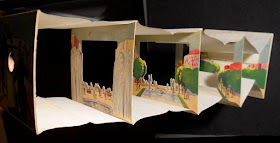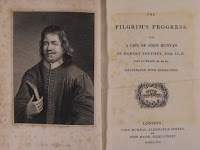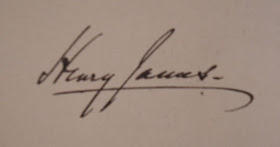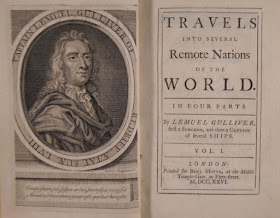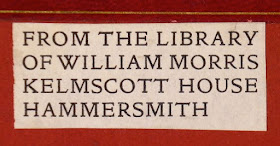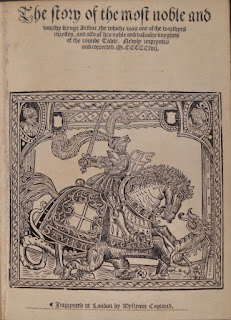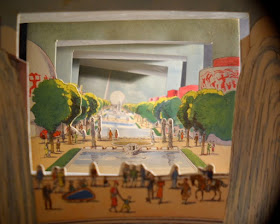 The 1939 New York World's Fair, "Building the World of Tomorrow," was a grand spectacular celebrating progress. It optimistically looked forward to a future where science and technology would usher in a world of ever growing prosperity and peace. World War II, concentration camps, and the atomic bomb would chill this notion, but in 1939, as the Great Depression waned, the fair's theme resonated with the American public.
The 1939 New York World's Fair, "Building the World of Tomorrow," was a grand spectacular celebrating progress. It optimistically looked forward to a future where science and technology would usher in a world of ever growing prosperity and peace. World War II, concentration camps, and the atomic bomb would chill this notion, but in 1939, as the Great Depression waned, the fair's theme resonated with the American public.This souvenir peepshow created by Elizabeth Hale and the famous type designer Warren Chappell, offers the viewer a glimpse of the utopian future: the fair itself. The book's structure allows it to collapse then fold out like an accordion to create depth.
Come take a peep by asking for Rare GV1525.H3 W6 1939
